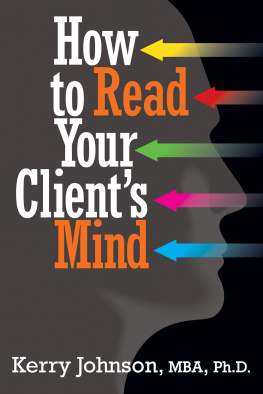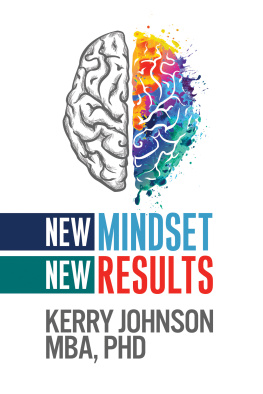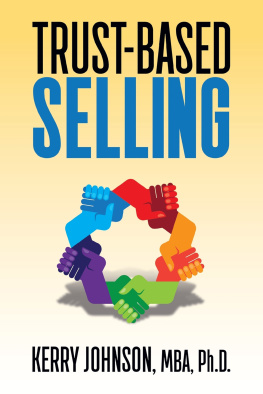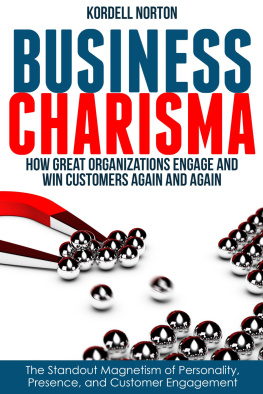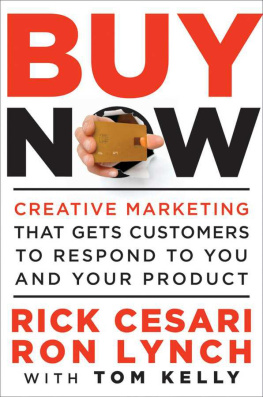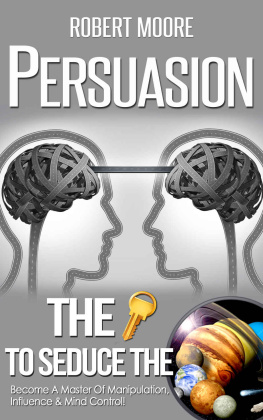
How to Read Your Clients Mind
How to Read Your Clients Mind
Kerry Johnson, MBA, Ph.D.
Published 2019 by Gildan Media LLC
aka G&D Media
www.GandDmedia.com
HOW TO READ YOUR CLIENTS MIND. Copyright 2019 by Kerry Johnson. All rights reserved.
No part of this book may be used, reproduced or transmitted in any manner whatsoever, by any means (electronic, photocopying, recording, or otherwise), without the prior written permission of the author, except in the case of brief quotations embodied in critical articles and reviews. No liability is assumed with respect to the use of the information contained within. Although every precaution has been taken, the author and publisher assume no liability for errors or omissions. Neither is any liability assumed for damages resulting from the use of the information contained herein.
FIRST EDITION 2019
Front cover design by David Rheinhardt of Pyrographx
Interior design by Meghan Day Healey of Story Horse, LLC
Library of Congress Cataloging-in-Publication Data is available upon request
ISBN: 978-1-7225-0180-8
eISBN: 978-1-7225-2277-3
10 9 8 7 6 5 4 3 2 1
Contents
Introduction
I n the mid-1970s, after I graduated from college, I walked into a San Diego employment agency looking for a job. Armed with a BA in experimental psychology, I was at a point in my life where I didnt quite know what career path to follow. Being an honor student, I was so enraptured with psychological research that I scarcely thought about where my degree would lead.
I had only a few options. I could either go on to graduate school, furthering my esoteric endeavors in obscure psychological phenomenology, or get a job. A few days after graduation, I walked into the sales office of a large computer manufacturer, trying to convince the interviewer that I had skills that could be useful to some employer somewhere.
Scanning my rsum, he looked over the top of his glasses and said flatly, If youre an aspiring college professor, youre in great shape. Otherwise, I have a $3-an-hour job for you parking cars. Shocked, I struggled in my mind to find any research on sales or persuasive communication that would convince him that I had studied in the sales area, if not actually possessing selling experience.
I suddenly remembered a study I did as a junior on nonverbal behavior. Based on Ray Birdwhistells book Kinesics and Context, my studies delved into the behavioral patterns people show when they think. I researched more than twenty other studies on the subject. I also had extensive videotaped sessions with people we had interviewed. We asked questions leading them to states of happiness, skepticism, anger, and interest, among many others. We were able to see a strong relationship between many observable body movements and the emotions the subjects reported. Describing all this research to the sales manager, I sensed his interest in picking me up. Apparently their sales training consisted of features and benefits and ten ways to close, but nothing on the behavioral side of selling.
He asked me if Id ever spoken to a group before. I said, Sure. Many times. I actually had only presented once before to a group of ten freshmen in an after-class meeting, but I really wanted the job.
He said, Do you charge a fee to speak?
I said, Well, uh, $150. I would have felt lucky to get $25, but I thought a low price might him think I wasnt any good.
Sounds fine, he said. Lets schedule it for three weeks from now in San Francisco.
Boy, I was really scared. Not only had I never received a fee before, but I felt intimidated that they wanted to import me by airplane. Practicing night and day for three weeks, at twenty-two years of age, I presented my three-hour talk on nonverbal communication.
Although my speaking skills were mediocre at best, they were good enough to elicit a job offer from the manager, this time to a group of managers at the Columbia School of Broadcasting. I was very flattered by the attention, but just at that time, I received written invitations from tournament directors to play in the Grand Prix tennis circuit, so I decided to try my hot hand at professional tennis.
When I returned from the tennis tour, I turned my attention to academia, studying client relations and sales psychology in my graduate-level research. After graduation, I got experience selling as a stockbroker. I applied my PhD (piled higher and deeper) research into real-world applications.
The purpose of this book is to give you a good idea of what your listener is really thinking, sometimes in spite of what he or she says. After reading this, you should be vastly sharper with your clients, in your ability not only to read their nonverbal cues, but also to listen and persuade.
Whether youre a salesman, accountant, lawyer, or manager, you are paid to communicate with people. Your income will grow commensurately, not with your tactical ability, but with your ability to read people well enough to communicate the right message at the right time.
At a recent financial conference, the top producer, making over $1 million in commissions per year, said, You all out there in the audience keep asking me how I analyze my clients portfolios. Im no better at this than you are, but Im a great communicator. I make more money than you because I read my clients better than you. Im paid to know how to deal with people, not to analyze their portfolios. I pay employees to do that for me.
This really shouldnt surprise you. In our age of technological thinking, we would like to think that those with the better mouse-traps win. This is not always the case. Technology doesnt make money; you dothrough the way you deal with people.
This six-chapter book is delineated into three distinct sections. The first two chapters present some basic principles. suggests techniques you can use to listen people into accepting your ideas rather than trying to talk them into it.
Youll be asked to visualize numerous gestures and behaviors. I recommend that you spend a few minutes familiarizing yourself with the characteristics of each behavioral gesture.
The best way to learn this material is to read this book at least three times in the space of thirty days. Research into memory has shown that you will forget approximately 90 percent of what you hear after seven days. Through the reinforcement of rereading, that percentage will drop to 60 percent, and if you go through the book a third time, youll retain up to 80 percent of what youve heard after thirty days.
To learn any new ideas, you must practice them. Try to use as much of what you hear as possible on your friends and acquaintances. To develop your confidence, try to apply the ideas first on them. (Itll be fun to watch your associates cross their arms, put their fingers up to their face, or sit back in their chairs.) If you use the ideas first in a nonthreatening environment, youll be much more effective with your clients.
After youve used these techniques, send me a note. Id like to know how youve applied the ideas. Since I write so frequently for magazines, its very likely Ill use your experiences in my monthly columns. My contact information is:
714-368-3650
Twitter: @DrKerryJohnson
Linked In: Kerry Johnson, MBA, PhD
Facebook: Kerry Johnson, MBA, PhD
One
How to Keep Someones Attention
W hen youve been one-to-one with a prospect or client, have you ever gotten the impression that they didnt quite agree with something you had just said? Did they ever seem a bit skeptical with you, as if they didnt quite understand it? Or didnt believe it?
Next page
